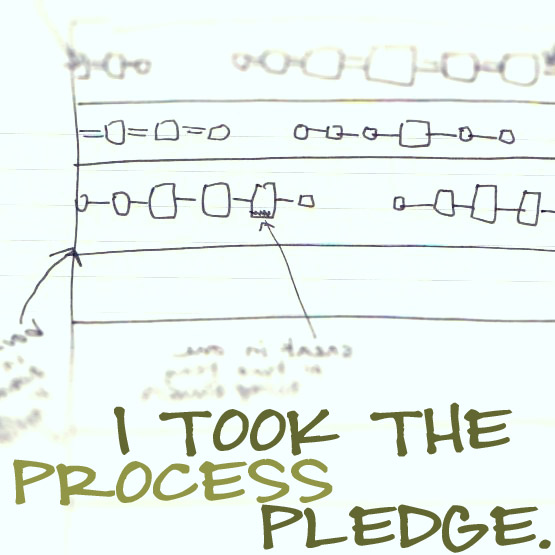 I'm using hexagons that measure 1" on a side, so a 2.5" square of fabric is big enough to cover the entire piece of paper. I have a lot of 2.5" strip scraps left over from various projects, and have raided my scrap basket to make as many 2.5" squares as possible. I now have stacks of them sitting around the house (and today, on the porch!).
I'm using hexagons that measure 1" on a side, so a 2.5" square of fabric is big enough to cover the entire piece of paper. I have a lot of 2.5" strip scraps left over from various projects, and have raided my scrap basket to make as many 2.5" squares as possible. I now have stacks of them sitting around the house (and today, on the porch!). The paper piece is set on the wrong side (back) of a piece of fabric; this could be a hexagon of fabric, but it's much easier to just cut a square, so I'm sticking with that. It also seems less wasteful; the extra bits of fabric could get thrown away, or they could add extra bulk (and a little more warmth) to the final quilt.
The paper piece is set on the wrong side (back) of a piece of fabric; this could be a hexagon of fabric, but it's much easier to just cut a square, so I'm sticking with that. It also seems less wasteful; the extra bits of fabric could get thrown away, or they could add extra bulk (and a little more warmth) to the final quilt. You fold the edges of the fabric over the paper piece and baste at the corners with thread in a contrasting color:
You fold the edges of the fabric over the paper piece and baste at the corners with thread in a contrasting color: I'm using plain cream-colored thread, since for this project I'm mostly using saturated colors. I've seen people use blaze-orange, but I like the soothing effect of the white and it's still easy to see so it will be easy to remove later.
I'm using plain cream-colored thread, since for this project I'm mostly using saturated colors. I've seen people use blaze-orange, but I like the soothing effect of the white and it's still easy to see so it will be easy to remove later. Once all six sides have been folded over and basted down, the back of the hexagon looks like this:
Once all six sides have been folded over and basted down, the back of the hexagon looks like this: And from the front, you have a nice hexagon of fabric with lines of basting thread!
And from the front, you have a nice hexagon of fabric with lines of basting thread! Two hexagons get put together front to front, and you sew along one edge. Unfold, add another hexagon, repeat. And repeat. And repeat. Once the hexagons are sewn together, the basting thread is removed and the paper is taken out. A queen-sized quilt with hexagons this size will take more than 1,000 hexagon pieces. That's a lot of hexagons! We'll see how far I get before I get bored.
Two hexagons get put together front to front, and you sew along one edge. Unfold, add another hexagon, repeat. And repeat. And repeat. Once the hexagons are sewn together, the basting thread is removed and the paper is taken out. A queen-sized quilt with hexagons this size will take more than 1,000 hexagon pieces. That's a lot of hexagons! We'll see how far I get before I get bored.~Phosphorelated




No comments:
Post a Comment